SakenowaRecord your sake experiences and discover your favorites
Registered Date
Check-ins
708Favorite Brands
4Most Check-in Brands
Timeline
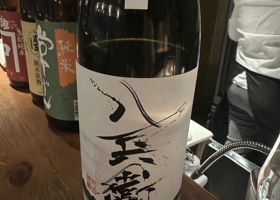
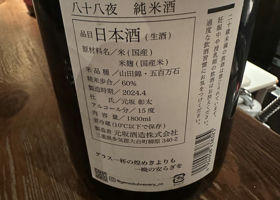
Ryu
dry taste
Richness of Gohyakumangoku
Yamadanishiki is said to be included.
Japanese>English
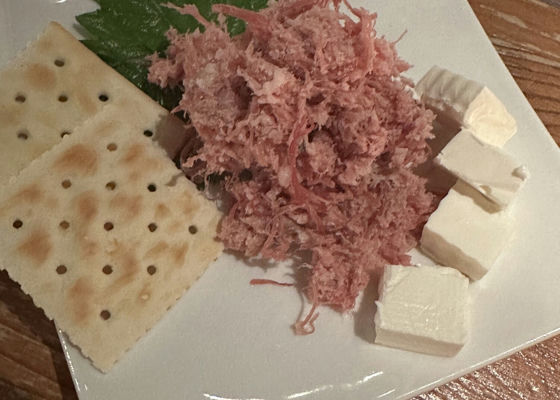
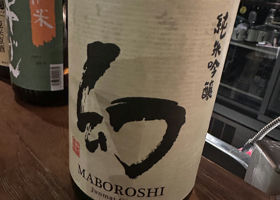
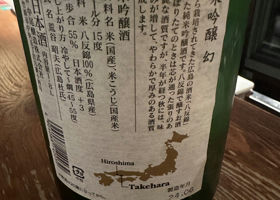
Ryu
Warmed.
Firm
A little full-bodied
Japanese>English
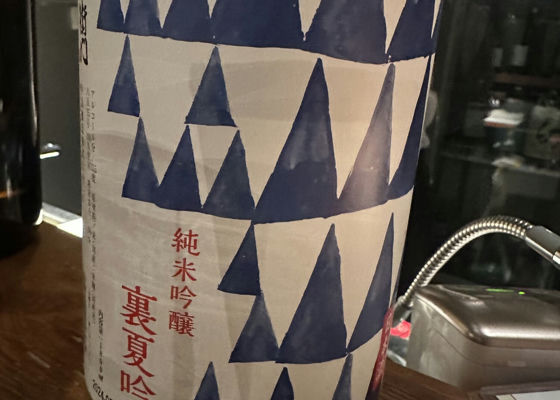
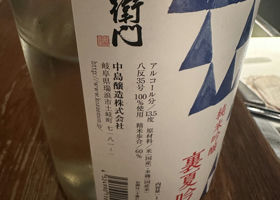
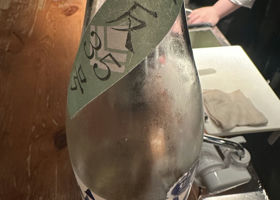
Ryu
Hachitan-Nishiki 35
Firmly sharp
Lightly dark chocolate
Japanese>English
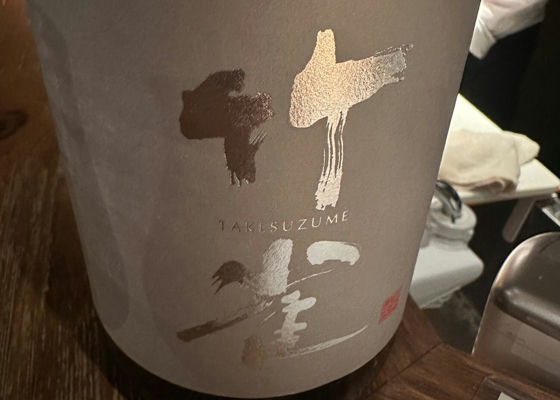
Ryu
rich
Chocolate flavor
Warmed.
Japanese>English
御前酒等外雄町 生50
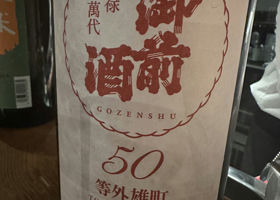
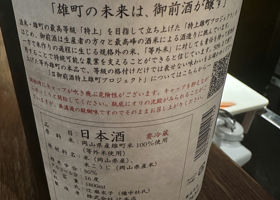
Ryu
Full-bodied, not too fruity.
Japanese>English
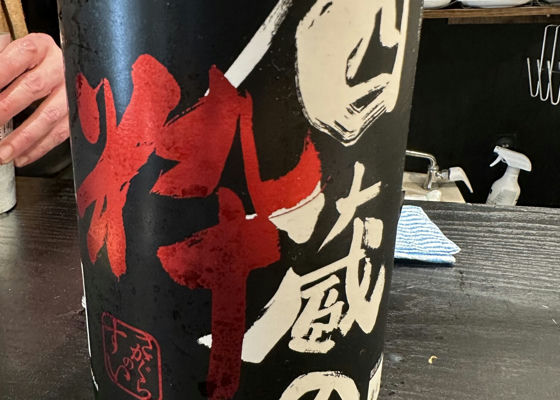
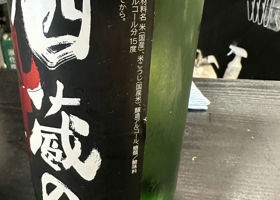
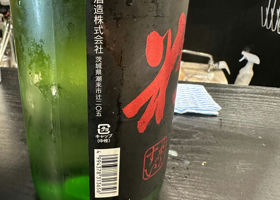
Ryu
It is said to cost about 1,000 yen for a bottle. It is good for a cheap sake. It is a dry and rich sake typical of Ibaraki.
But the ingredients include sugar and acidifiers. Thanks to these additives, the quality of the sake looks reasonable.
The mouthfeel is like that of junmai sake, but the discomfort left on the tongue is hard to mask.
Japanese>English
Fusano KankikuTrue White
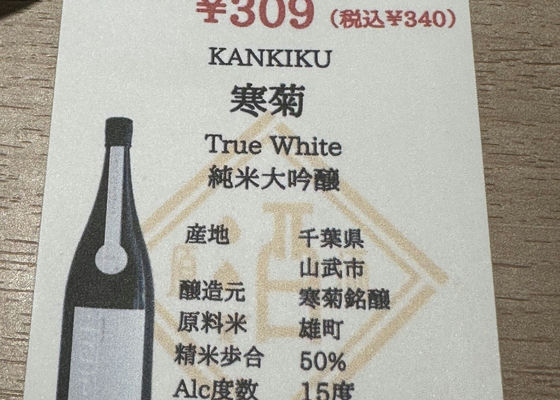
Ryu
Junmai Daiginjo
Mellow. Perhaps because it is halfway sweet and has little ginjo aroma, it is less impressive than the usual Kangiku.
I wonder why the junmai ginjo I had before had more ginjo aroma.
It's good, but it's still good.
3.5
Japanese>English
Hanaabi備前雄町 無濾過生原酒
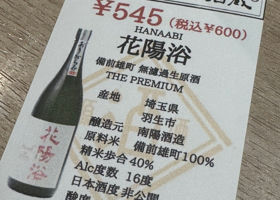
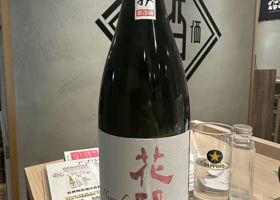
Ryu
THE PREMIUM
connection
I think it is rare to find orihara in Hanabi.
It seems that the only difference between Bizen Omachi and Omachi is the contract farmer.
The ogara-mi has a nice richness. It has the rough feeling of unfiltered raw sake, but the aftertaste is amazingly pure and clean.
No matter what kind of sake rice is used, a pure sake is still a pure sake.
The pineapple flavor may be due to the yeast and the manufacturing process.
Japanese>English
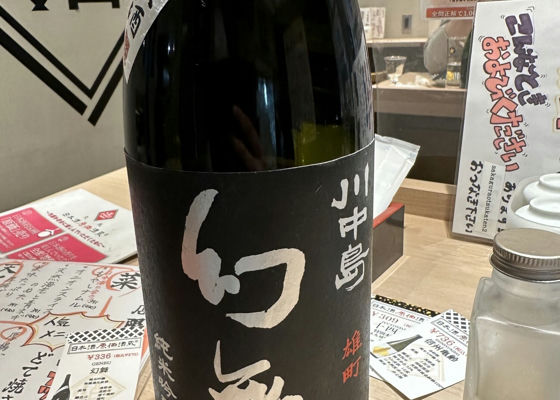
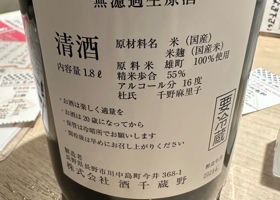
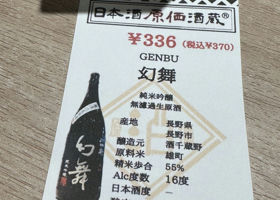
Ryu
Omachi
Powerful, rugged, deep and fruity
4
Japanese>English
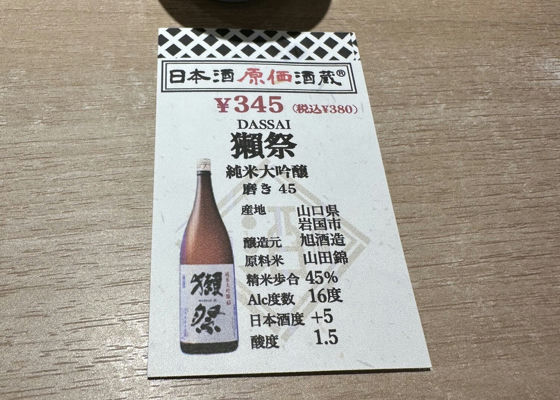
Ryu
Polished 45
After drinking the blue, the softness of the water is still noticeable. The aroma is also more spread out.
It is as if the innocent taste of the soft water helps the aroma to spread.
I think once again that this is a finished product.
Japanese>English
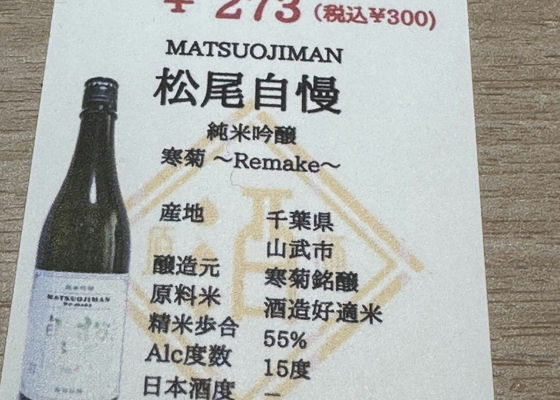
Ryu
Kangiku Shuzo
It has a mineral taste or a full-bodied taste.
It is fruity and delicious.
Japanese>English
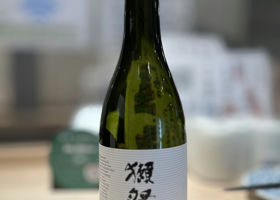
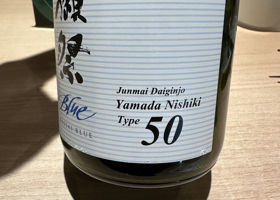
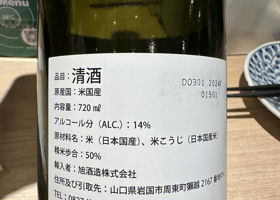
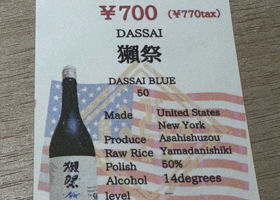
Ryu
Otter made in New York.
The label says something about the pursuit of even better taste, but it tastes just like the usual Otters. In a sense, this is the work of Otters, whose manufacturing process is data-coded, because they make this in America, where the environment is different.
It is strange that the item is not sake but sake because it is not made in Japan.
Still, they can call themselves Junmai Daiginjo. It's in Roman characters, though.
The water in the other country has a high hardness, so the minerality is strong and the taste has more depth.
The alcohol content is a little low at 14, but you don't feel it. Usually, when there are a lot of minerals in water, yeast tends to play an active role and the alcohol content tends to be higher, but I wonder how they adjust the alcohol content.
The wine's alcohol content is around 12%, so it is likely that the aim was to lower the alcohol content to match the wine.
4
Japanese>English
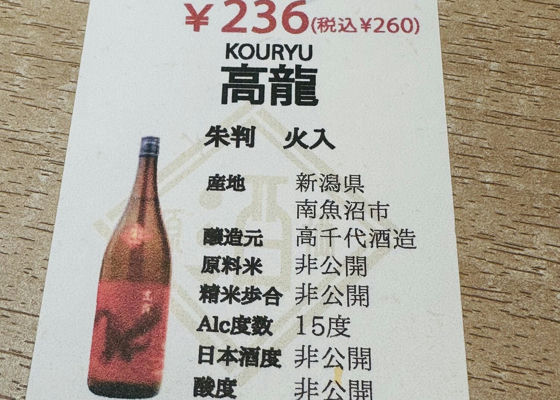
Ryu
Takachiyo Series
This one is regular.
Kanji that made the more difficult Hashigo-Takashi and the more difficult Ryu even more difficult.
This series is al-soe and dry. It is rare for Takachidai to be aluzoe.
However, because it is a Takachidai, it has a sweet taste. The first taste is sweet, and the second taste is dry.
I don't know what the specs are, but it has sweetness, spiciness, depth, and a kick in the middle.
I don't know what the specs are. It's great when warmed up to lukewarm. The aroma spreads, the rice flavor, and the sharpness.
3
Japanese>English
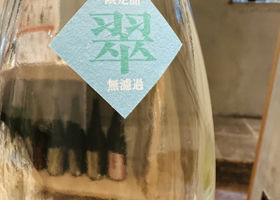
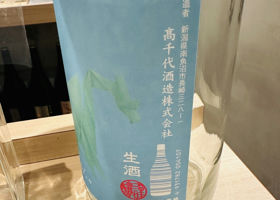
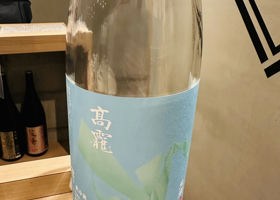
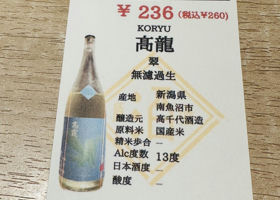
Ryu
Unfiltered draft
13 degrees. Low for some reason.
Umami, depth, alsobe sharpness.
This one seems to be a limited edition.
The red is good as red, but this one has more flavor than the red because it is unfiltered.
Japanese>English
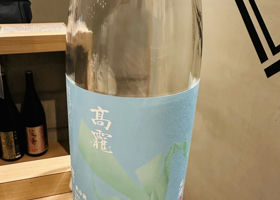
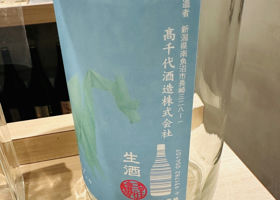
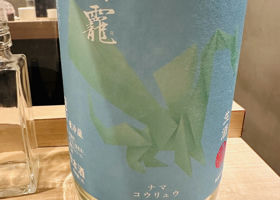
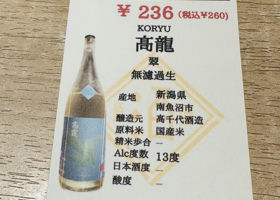
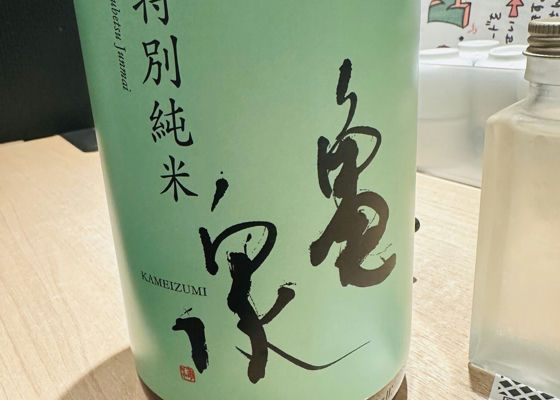
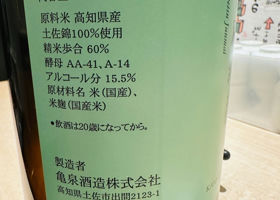
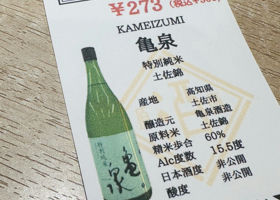
Ryu
Tosa Nishiki
Special Junmai
A wet texture.
Still, it is a dry sake.
It has depth.
As a side note, the name "Tokuso-Junmai" can be used if the rice polishing ratio is less than 60 or if the conditions are met. It does not matter if it is called junmai sake or not. It is said that the lower the rice polishing ratio, the more refreshing the sake will be, but it is difficult to say for sure.
Even if the sake does not meet these conditions, it can be called junmai sake if it is made by a special process. In that case, it is necessary to write the manufacturing method on the label. In other words, this is the former.
Japanese>English
Ryu
The nectar
Sweet and refreshing.
It really reminds me of the nectar of flowers. But it's not too strong. As expected of the brewer, he is very good at making it sweet.
The reason for this sweetness is the four-stage brewing process.
The brewer had a hard time selecting the right sake rice, saying, "The taste of the sake rice should not come out too much, and it should not be too sweet. But in the end, it is Dewa Sanbana from Yamagata Prefecture.
I like it a lot. Is it ethyl caproate like Hanabi or something? Ginjo aroma? In a sense, it is a sweet sake with a different vector from the fruity, fruity sake like Hanabi.
4
Kudokibe Jr. is a series of sake brewed at the discretion of Kamenoi Sake Brewery's senior manager. Kudokibe Jr. is a series of sake brewed at the discretion of Kame-no-i Shuzo's senior director, and has been attracting many drinkers with its wide range of flavors, from the royal road that inherits the gorgeous quality of Kudokibe to unique ones from a new perspective.
And Super Kudokidote is said to have a rice polishing ratio of less than 30 percent.
Japanese>English
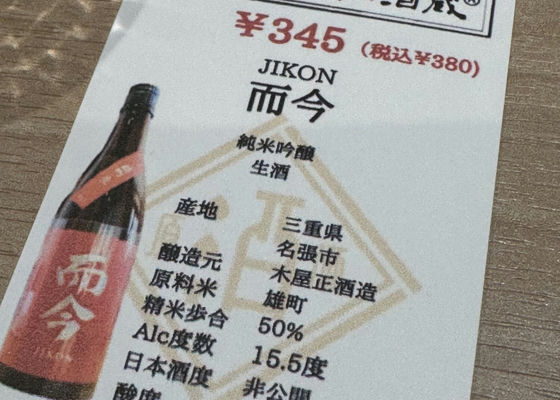
Ryu
sake made without added alcohol or sugar
Junmai Ginjo
Omachi
Polishing rice 50
The ruggedness of Omachi stands out. There is no fruity flavor at all.
3
Japanese>English
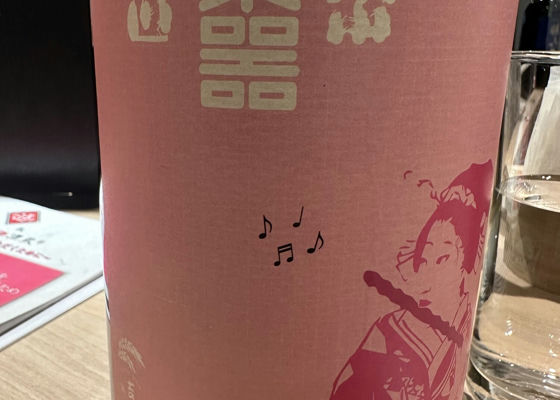
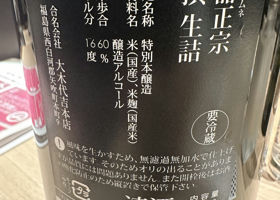
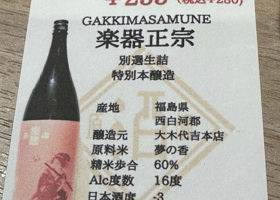
Ryu
Bessen Namaizume
Rumune
The quality of the raw ingredients is apparent. The flavor spreads and then tightens up.
Japanese>English